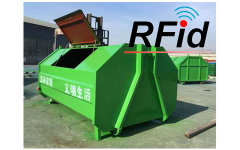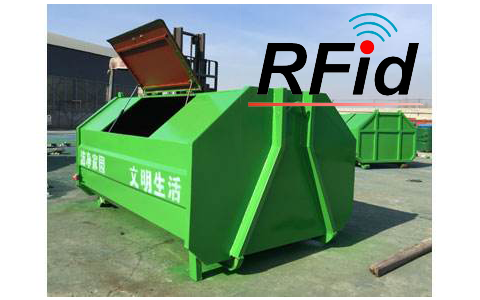
RFID environmental sanitation and transportation supervision to create a smart construction platform
[ad_1]
With the continuous improvement of the quality of life, the protection of links has been continuously tightened, and the importance of the sanitation department has become more and more prominent. Due to the rapid urban construction and some limitations in technology or management, the Department of Environmental Sanitation also faces many challenges in the management of sanitation vehicles. The number and distribution of environmental sanitation facilities, ensuring that the number of garbage collections are in place, ensuring that the garbage is cleaned every day, the timely transfer of garbage, and the timely dispatch will become important links in the supervision of environmental sanitation and transportation. The main tools for sanitation work are sanitation vehicles and trash cans. RFID technology makes environmental sanitation more intelligent by automatically collecting information in various links, and RFID environmental sanitation and transportation supervision creates a smart construction platform.
The digital sanitation management platform is a comprehensive application of computer technology, wireless network technology, GIS geographic information technology, and video surveillance technology. Through the establishment of a unified management system, it can realize the effect of sanitation operations, sanitation operation vehicles, sanitation facilities, and waste terminal disposal. And the whole-process monitoring of the sanitation environment, so that the sanitation operation problems can be detected early and resolved quickly.

RFID waste removal supervision through the installation of on-board UHF RFID reader equipment inside the garbage truck, and sticking the garbage bin identification UHF RFID tag outside the garbage bin. When the garbage truck starts to load and unload the garbage, the UHF RFID reader device on the truck will read the UHF RFID tag on the garbage bin being operated. After the RFID reader device recognizes the operating time of the trash can and the ID number of the RFID electronic tag, it transmits the data to the terminal server via the vehicle, indicating that the trash can has been cleaned, and the status of the trash can indicates that it has been cleared today . The status of the trash can has been cleaned within 24 hours, and it is displayed in green in the terminal system operation interface; if the terminal server does not receive the label data of the trash can after 24 hours, it means that the trash can has not been emptied. At this time, the garbage The status of the bucket is determined to be uncleared, and it is indicated in red on the system operation interface.
In this way, the operation time of each trash can and the electronic tag ID information system will be recorded. Realize the digital management of urban waste clean-up work.
1. The management of construction dregs is mainly to set up RFID tag reading points (handhelds or fixed readers, which can be installed on excavators and slag unloaders where conditions permit) at the starting and receiving points. The installation of RFID electronic tags on the soil transport vehicle, combined with a smart phone and a customized APP, can supervise the entire transportation process of the soil, and provide a data basis for the supervision of the soil and vehicle billing.
2. Domestic garbage truck management is divided into two categories. One is garbage collection trucks. UHF readers and wireless data transmission equipment are installed on sanitation garbage trucks. The tags of garbage cans are read and transmitted to the cloud to monitor garbage trucks to recycle domestic garbage. If conditions permit, you can install a smart weighing device to calculate the weight information of each barrel of garbage; the other is a domestic garbage truck, and the management method is to install RFID UHF long-distance readers at the loading and unloading ends, and install RFID electronics on the vehicle. Label, supervise the flow of domestic waste transportation and vehicle counting.
3. Food waste management. Due to the existence of waste oil, the supervision of food waste has been increased in recent years, and the addition of RFID radio frequency identification counting and intelligent weighing equipment is the best solution at present. Real-time online monitoring of the source, destination, production volume, clearing volume, and processing volume of the product. At the same time, the supervision of the collection and transportation process includes whether the collection and transportation process is on time, whether the collection and transportation route is working, and whether the collection and transportation process is standardized, etc. Its main purpose is to supervise the standardized operation in the process of collection and transportation, avoid illegal transfers, and be able to provide a basis for settlement of funds for the competent financial department.
4. Medical waste is a hazardous waste. The Ministry of Health of my country clearly stipulates that medical waste in hospitals must be stored in closed storage, stored at designated locations, and transported by special personnel. Medical waste must be incinerated to ensure sterilization and avoid environmental pollution. Any form is not allowed. Recycling and reuse. The disposal of medical waste and medical, urban construction, environmental protection, scientific research and other departments need to strengthen cooperation and increase supervision in all links. A high-speed and efficient information network platform based on RFID technology combined with GPS technology and GPRS technology to achieve visualized medical waste transportation management and real-time positioning, and a medical waste RFID monitoring system based on EDI as the backbone technology, will realize the medical waste treatment process for environmental protection departments The whole process of supervision provides basic information support and guarantee.
[ad_2]



